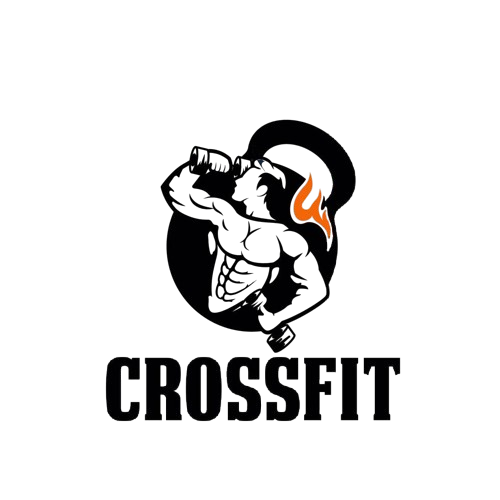CrossFit has surged in popularity as a high-intensity, community-driven workout regimen, yet it also garners significant backlash. Why does this fitness phenomenon attract such strong opinions, both positive and negative? Is it the culture, the methodology, or something else entirely that fuels the flames of disdain? Dive into the controversial world of CrossFit to explore the reasons behind the animosity, and discover if the criticism is warranted or if it’s simply misunderstood.
Misconception of CrossFit’s Intensity
One of the most pervasive myths surrounding CrossFit is its intensity level, which often gets misinterpreted as excessively high or only suitable for elite athletes. This misconception stems from viral videos and social media posts showcasing athletes performing at their peak, which, while impressive, do not represent the everyday experience of most CrossFit participants. In reality, CrossFit workouts are designed to be scalable to accommodate individuals at different fitness levels, from beginners to advanced athletes.
Another factor contributing to this misconception is the competitive aspect of CrossFit. While competition is a component, it is not the essence of CrossFit. The core philosophy of CrossFit emphasizes personal improvement, community support, and health benefits. By focusing solely on the competitive elements, one can overlook the inclusive and supportive environment that CrossFit fosters, making it accessible to a wider audience regardless of fitness background.
Lastly, the portrayal of CrossFit as injury-prone due to its intensity is another misconception. Like any sport or physical activity, the risk of injury exists, but with proper coaching, technique, and scaling, CrossFit can be as safe as any traditional gym workout. The emphasis on functional movements and strength building can actually contribute to injury prevention and overall health improvement.
- Scalability to all fitness levels
- Emphasis on community and personal improvement
- Competitive aspect is only one component
- Functional movements for everyday health
- Proper coaching reduces injury risks
Exploring the Divisive Nature of CrossFit
CrossFit, a high-intensity fitness program that combines elements from various sports and types of exercise, has garnered a significant following worldwide. However, it has also faced considerable criticism and backlash. This mixed reception can be attributed to several factors that contribute to its divisive reputation. By dissecting these aspects, we can gain a deeper understanding of the polarizing views surrounding CrossFit.
One primary concern is the perceived risk of injury associated with CrossFit workouts. Critics argue that the emphasis on high-intensity and complex movements, often without adequate recovery, can increase the likelihood of injury. This perspective is supported by reports of participants experiencing overuse injuries, rhabdomyolysis (a serious syndrome caused by muscle damage), and other health issues. The competitive atmosphere, while motivating for some, may push individuals beyond their physical limits, exacerbating this issue.
Another point of contention is the certification process for CrossFit coaches. Detractors claim that the certification can be too easily obtained, lacking the depth required to ensure coaches are adequately prepared to design safe and effective workout programs for diverse populations. This, combined with the high-intensity nature of the workouts, can lead to instances where participants are not properly guided or monitored, increasing the risk of incorrect form and subsequent injuries.
| Aspect | Criticism | Counterargument |
|---|---|---|
| Risk of Injury | High-intensity and complex movements increase injury risk. | Proper form and scaling options can mitigate risks. |
| Coach Certification | Certification process is too simple, questioning the expertise of coaches. | Many coaches pursue further education and certifications beyond the basic level. |
| Competitive Culture | Can push participants beyond safe limits. | Encourages personal growth and community support. |
| Cost | Membership fees are often higher than traditional gyms. | Reflects the personalized coaching and community aspect. |
| Exclusivity | Perceived as unwelcoming to beginners or those out of shape. | Many boxes offer introductory classes and prioritize community and inclusivity. |
In response to these criticisms, it’s important to highlight that many within the CrossFit community are working to address these issues. There is an increasing emphasis on coaching education, injury prevention, and fostering a supportive, inclusive environment. While it’s clear that CrossFit is not without its faults, the program has also had a positive impact on countless individuals, helping them achieve fitness levels and personal goals they hadn’t thought possible. As with any fitness regimen, potential participants are encouraged to research, speak with professionals, and consider their own health and fitness levels before diving in.
Understanding the controversies and criticisms of CrossFit is crucial for anyone considering joining the community or incorporating its methodologies into their fitness routine. While it offers numerous benefits, including improved strength, endurance, and camaraderie, it’s also essential to approach it with caution, especially for beginners. Acknowledging the concerns allows for a balanced perspective, ensuring that individuals can make informed decisions about their fitness journeys.
Criticism Over CrossFit’s Community
The CrossFit community, often described as tight-knit and supportive, has also faced its share of criticism. While many find the sense of camaraderie empowering, critics argue that it can foster an exclusionary atmosphere, particularly for beginners or those not fully immersed in the CrossFit lifestyle. This sentiment stems from observations that the community sometimes exhibits cult-like traits, prioritizing CrossFit above other fitness philosophies and inadvertently alienating those who do not share the same level of enthusiasm.
Additionally, the competitive nature of CrossFit, while motivating for some, can be overwhelming for others. The emphasis on pushing physical limits and the celebration of personal records can lead to an environment where individuals feel pressured to perform beyond their capabilities, risking injury. This competitive aspect, coupled with high-intensity workouts, raises concerns about the safety and approachability of the program for a diverse range of participants. Critics argue that this can contribute to a community that, despite its intentions, appears unwelcoming and intimidating to novices.
The debate over the CrossFit community’s inclusivity touches on broader themes of fitness culture and the balance between fostering a motivating community and ensuring it remains accessible and safe for everyone. As CrossFit continues to grow in popularity, addressing these criticisms will be crucial in maintaining its reputation and ensuring that it can provide a supportive fitness community for all interested individuals.
| Aspect | Criticism | Community Response |
|---|---|---|
| Exclusivity | Perceived as unwelcoming to beginners | Efforts to introduce beginner-friendly programs |
| Competitiveness | May lead to undue pressure and injury | Increased focus on personal progress and safety |
| Cult-like Traits | Intense loyalty can alienate non-members | Promotion of community events open to the public |
| Safety Concerns | High-intensity workouts may not be suitable for all | Introduction of scaled options and proper coaching |
| Accessibility | Cost and physical demands can be barriers to entry | Offering community classes at reduced rates |
The CrossFit community has been a subject of fervent discussion, praised for its supportive nature on one hand and critiqued for perceived exclusivity and competitiveness on the other. These criticisms are not just superficial observations but reflect deeper concerns about the inclusivity and safety of fitness cultures that emphasize high-intensity and competitive workouts. The response from within the CrossFit community indicates a recognition of these issues and a willingness to adapt. By promoting beginner-friendly programs, emphasizing personal progress over competition, and addressing safety concerns, the community shows a commitment to being more inclusive and accessible. As CrossFit evolves, this ongoing dialogue between critics and proponents will be essential in shaping a community that truly welcomes everyone, regardless of their fitness level or background.
Injuries and Safety Concerns
CrossFit, a high-intensity fitness program that incorporates elements from various sports and types of exercise, has witnessed a meteoric rise in popularity over the last two decades. Despite its success and the strong community it has built, CrossFit has also been a subject of controversy, particularly related to injuries and safety concerns. The discourse around the safety of CrossFit workouts often centers on the program’s intensity and the competitive environment it fosters, which, for some, pushes the boundaries of physical limits and safety.
One of the primary issues is the nature of CrossFit workouts, which demand a high level of physical exertion and technical skill. The workouts, known as “WODs” (Workout of the Day), often combine Olympic weightlifting, high-intensity cardiovascular exercises, plyometrics, powerlifting, and gymnastics. While this variety can provide a comprehensive fitness regimen, it also introduces a risk for injury, especially for beginners or those without proper form or technique. The emphasis on achieving personal bests and high-intensity training can sometimes lead to overexertion, where the risk of musculoskeletal injuries increases significantly.
Another factor contributing to the safety concerns is the variability in coaching quality. CrossFit gyms, known as “boxes,” are independently owned and operated, which means the experience and qualifications of coaches can vary widely. Although CrossFit Inc. offers certification courses for coaches, the levels of experience and expertise can still differ, affecting how safely exercises are instructed and supervised. This inconsistency can lead to participants performing complex movements without adequate supervision or correction, increasing the likelihood of injury.
Despite these concerns, it’s important to acknowledge that injury rates in CrossFit are not significantly higher than other popular fitness activities, according to some studies. However, the perception of risk remains, partly due to the high visibility of injuries within the CrossFit community and the intensity associated with its workouts. It’s essential for individuals to consider their own physical limitations, seek out well-qualified coaches, and prioritize proper form and technique over competition to mitigate the risk of injury.
- Understand and respect your body’s limits to avoid overexertion.
- Seek out CrossFit boxes with experienced and certified coaches.
- Prioritize learning proper form and technique before increasing intensity.
- Listen to your body and rest when necessary to prevent overuse injuries.
- Consider scaling down workouts or modifying exercises to suit your fitness level.
In conclusion, while injuries and safety concerns are valid criticisms of CrossFit, they are not unique to this fitness regimen. Similar risks exist in many sports and fitness activities, especially where high intensity and complex movements are involved. Awareness, education, and a cautious approach to training can help mitigate these risks, allowing individuals to enjoy the benefits of CrossFit while minimizing the potential for injury.
CrossFit’s Competitive Nature
The competitive spirit embedded in CrossFit’s DNA often stirs a mix of admiration and criticism. At its core, CrossFit is designed to push individuals beyond their perceived limits through a combination of varied functional movements performed at high intensity. This competitive edge is not just against others, but also against oneself, fostering an environment where personal records and progress are highly valued. However, this same quality is a double-edged sword, as it can sometimes lead to intense peer pressure and an unhealthy obsession with constant improvement.
For many enthusiasts, the competitive aspect of CrossFit is a major draw. It encourages a level of dedication and commitment that is rarely found in other fitness disciplines, driving individuals to achieve remarkable fitness levels. Yet, the emphasis on competition can also create a sense of exclusion or intimidation for newcomers, who may feel inadequate when comparing their abilities to more experienced participants. Furthermore, the risk of injury is often heightened in such a competitive atmosphere, where the desire to outperform can lead to pushing oneself beyond safe limits.
The culture of competition within CrossFit is also manifested through its annual events, such as the CrossFit Games. These events celebrate the elite performers within the community, further highlighting the value placed on competition. While these competitions provide inspiring showcases of human performance, they can also perpetuate the notion that CrossFit is only for the elite and most physically capable, deterring broader participation.
| Aspect | Benefits | Drawbacks |
|---|---|---|
| Personal Improvement | Encourages self-betterment and goal setting | Can lead to unrealistic expectations |
| Community | Provides motivation and support | May foster a sense of exclusion |
| Physical Health | Improves overall fitness and endurance | Risk of injury from overexertion |
| Events | Spotlights achievements and elite performances | Can emphasize elitism within the community |
| Mental Fortitude | Builds resilience and mental toughness | Pressure to consistently perform can be mentally draining |
The competitive nature of CrossFit serves as a catalyst for some of its most fervent praise and critique. While it undeniably creates a dynamic and motivating atmosphere that can lead to impressive fitness achievements, it can also alienate those who perceive its environment as too demanding or exclusive. Understanding and navigating this balance is crucial for both current and prospective participants, ensuring that the spirit of competition enhances rather than detracts from the overarching goal of health and wellness.
Questionable Coaching Qualifications
One of the core criticisms directed at CrossFit centers around the qualifications of its coaches. The certification process for becoming a CrossFit trainer has been scrutinized for its brevity and perceived lack of depth. Unlike traditional fitness certifications, which may require extensive study, practical experience, and a comprehensive examination, the CrossFit Level 1 Trainer Certificate can be obtained over a weekend-long course. This rapid certification process raises concerns about the ability of coaches to provide safe, effective, and personalized training programs for individuals of varying fitness levels and health backgrounds.
Furthermore, the issue is not merely the duration of the certification course but also its content. Critics argue that the course inadequately addresses critical aspects of fitness coaching, such as anatomy, physiology, and the management of pre-existing injuries. This shortfall potentially places clients at risk of injury, especially in a high-intensity environment where the emphasis is on pushing limits. The CrossFit model’s heavy reliance on complex, dynamic movements amplifies these concerns, as improper technique or excessive training loads can lead to serious injuries.
Enhancing Coach Education and Certification Standards
Improving the educational requirements and certification standards for CrossFit coaches could significantly mitigate these concerns. An emphasis on thorough, science-based training methodologies, injury prevention, and personalized program design would better equip coaches to cater to a diverse clientele. Establishing a more rigorous and comprehensive certification process would not only enhance the safety and effectiveness of CrossFit programming but also bolster its credibility within the broader fitness community.
- Detailed anatomy and physiology education
- In-depth training on injury prevention and management
- Extended practical coaching experience
- Assessment of personalized program design capabilities
- Continuous education and re-certification requirements
The Cost of CrossFit Membership
One of the most commonly cited reasons for the animosity towards CrossFit is the cost of membership, which is perceived to be significantly higher than traditional gyms. This premium pricing model is not without justification; CrossFit gyms, or “boxes” as they are known within the community, offer highly specialized training regimens that require certified instructors. Furthermore, these facilities often maintain a lower coach-to-athlete ratio to ensure personalized attention, contributing to the elevated expense.
Additionally, CrossFit gyms frequently invest in unique equipment and maintain a community-oriented atmosphere that many find appealing. This sense of community, coupled with the intensive nature of the workouts, creates a value proposition that justifies the cost for many of its adherents. However, for those outside the community or new to the concept, the price can be a significant barrier to entry, fueling part of the disdain towards the CrossFit culture.
The financial commitment extends beyond the membership fee. Participating in CrossFit competitions, purchasing specialized apparel, and investing in dietary supplements recommended by the community can all add to the overall cost of being a part of CrossFit, making it appear as an elitist form of exercise to those with a more casual interest in fitness.
| Aspect | Average Cost | Comparison to Traditional Gyms |
|---|---|---|
| Monthly Membership | $150 – $200 | 2-3 times higher |
| Onboarding/Intro Classes | $100 – $200 | Often not required at traditional gyms |
| Drop-in Fee | $20 – $30 | Higher than average day pass |
| Yearly Competitions (optional) | $100 – $200 | N/A for most traditional gyms |
| Apparel and Supplements | Varies | Optional but heavily integrated |
Understanding the cost of CrossFit membership requires a nuanced perspective. While the initial sticker shock may deter some, it’s important to consider the comprehensive nature of the training and community support offered by CrossFit gyms. These aspects, while contributing to the cost, also define the value many find in this fitness discipline. It’s a matter of evaluating priorities, goals, and the perceived value of the CrossFit experience compared to other fitness modalities.
Moreover, it’s crucial to recognize that the high cost associated with CrossFit can contribute to its exclusivity, inadvertently creating a divide between those who can afford such a lifestyle and those who cannot. This financial barrier to entry is a significant factor in the polarized views on CrossFit, reinforcing stereotypes and contributing to the broader debate on accessibility in fitness culture.
CrossFit’s Public Image Issues
CrossFit, a high-intensity fitness program, has faced its share of public image issues over the years. At the heart of these controversies lie concerns over safety, the cult-like dedication of its community, and the perceived elitism of its participants. Critics argue that the brand promotes a go-hard or go-home mentality, which can lead to injury and alienation rather than fostering a supportive fitness community. Additionally, the high cost of membership and the program’s competitive nature are often seen as barriers to entry for newcomers.
Despite its widespread popularity and undeniable success in creating transformative fitness results, CrossFit’s image has been tarnished by viral videos of athletes pushing themselves to the brink of collapse and beyond. This portrayal feeds into narratives of CrossFit being dangerous and not aligned with long-term health and wellness goals. Furthermore, the company’s initial reluctance to address diversity and inclusivity within its community has not helped in dispelling notions of exclusivity.
An important aspect of CrossFit’s public image problem is the perception of elitism. The brand’s messaging and some vocal proponents often emphasize supremacy over other fitness regimes, inadvertently alienating potential members who do not see themselves as fit or competitive enough to participate. This challenge is compounded by the fact that success stories and promotional materials frequently showcase peak athletic performances, which can seem unattainable to the average person.
Further Insights into CrossFit’s Image Challenges
Another layer to CrossFit’s image issues is its social media presence. The brand and its affiliates have faced criticism for not adequately moderating content that may encourage unhealthy competition or unrealistic body image standards. Additionally, the high visibility of injuries associated with the program on online platforms has further fueled debates about its safety protocols and coaching quality.
| Aspect | Public Perception | Potential Impact |
|---|---|---|
| Safety Concerns | Viewed as dangerous | Decreases new member interest |
| Community Culture | Seen as exclusive | Limits diversity and inclusivity |
| Cost of Membership | Perceived as high | Barriers to entry for newcomers |
| Competitive Nature | Overshadowing wellness goals | Alienates non-competitive individuals |
| Social Media Presence | Can promote unrealistic standards | Further impacts public image negatively |
In conclusion, while CrossFit has transformed countless lives through its rigorous fitness regimen, its public image issues stemming from safety concerns, perceived exclusivity, and social media presence continue to challenge its broader acceptance. Addressing these concerns head-on, through improved safety protocols, fostering a more inclusive community, and moderating online content, could help in reshaping its public image. As the fitness industry evolves, so too must CrossFit, adapting to the needs and concerns of its diverse potential membership base.







